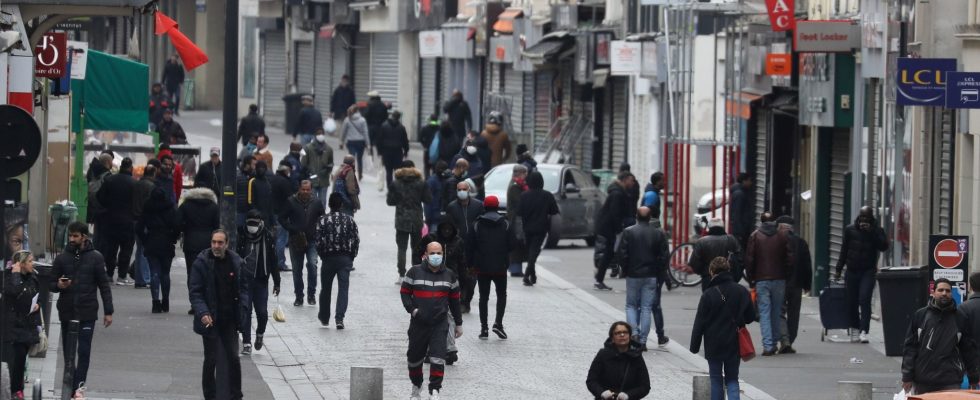Since 2015, the French population has increased less rapidly. This is what the results of a study published by the National Institute of Statistics and Economic Studies (Insee) this Thursday, December 28. “As of January 1, 2021, 67,408,000 people live in France excluding Mayotte, representing an average growth of 0.3% per year since 2015, compared to 0.5% between 2010 and 2015,” indicates the statistics institute.
This demographic slowdown is explained by the decline in the contribution of the natural balance (the difference between the number of births and the number of deaths, Editor’s note) to population growth: it increased from 0.4% per year on average between 2010 and 2015, at 0.2% annually between 2015 and 2021.
Two reasons explain this phenomenon. “On the one hand, the number of deaths is increasing, due to the arrival at advanced ages of large baby boom generations and, to a lesser extent, the Covid-19 epidemic over the last year of the period, deciphers Chantal Brutel, researcher at INSEE and author of the study. On the other hand, the number of births is declining, with the decline in fertility and the number of women of childbearing age.
Guadeloupe and Martinique losing momentum
However, if we look more closely, disparities appear between regions. While most continue to see their populations increase, others are experiencing the opposite effect. This is particularly the case of Normandy and Burgundy-Franche-Comté which saw their population decrease by 0.1% per year between 2015 and 2021.
This decline, however, remains out of proportion with that observed in Guadeloupe and Martinique. While an initial decline in the population was noted over the period 2010-2015, the trend has been confirmed in recent years. Since 2015, the two overseas territories have recorded a decrease of 0.6% and 0.9% in their population respectively each year.
The reason ? Migration balances (difference between the number of departures and arrivals) are “particularly negative”, and which weigh less and less on demographic development: – 0.9% in Guadeloupe and – 1% in Martinique each year, compared to 0.1% on average across the entire French territory excluding Mayotte.
Corsica and Occitanie boosted by arrivals
If nine regions claim growth greater than or equal to 0.4% between 2015 and 2021, three stand out for a particularly dynamic demographic rate. And especially Guyana, which reaches 1.6% per year thanks to a higher number of births than deaths. Corsica also sees its population grow by 1% each year. Unlike Guyana, whose migratory balance is negative, the Isle of Beauty attracts new inhabitants every year. 1.1% of its population growth is attributable to a greater number of arrivals than the number of departures. Which is enough to counterbalance a particularly low natural balance.
Same pattern in Occitane, whose growth has reached 0.7% per year since 2015. The region chaired by the socialist Carole Delga continues to see an influx of new arrivals, with a migratory balance which weighs around 0.7% in demographic development. . Note that the West and the South-West attract on average more than the East and the North of France.
Higher population growth in cities
Unsurprisingly, between 2015 and 2021, the population increased twice as fast in cities: 0.4% on average per year, compared to 0.2% in rural areas. More surprisingly, however, this difference does not have its source in net migration. “The lower growth in the rural population is explained by a negative natural balance despite the positive contribution of the apparent migratory balance,” analyzes Chantal Brutel, from INSEE.
But since 2015, annual urban population growth has been lower than over the period 2010-2015. And although it remains the most populous city in France, Paris sees its population decrease by 0.6% each year. Indeed, between 2015 and 2021, 73,377 Parisians in search of better living conditions deserted the capital.
